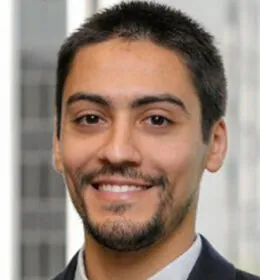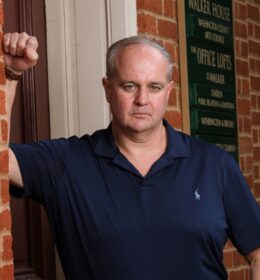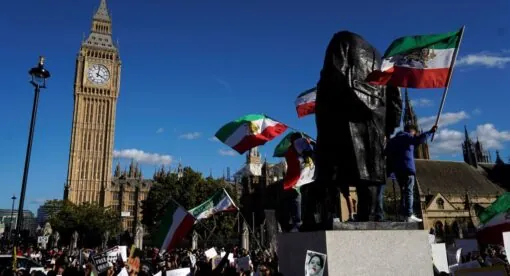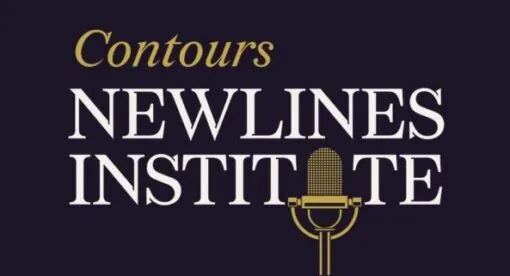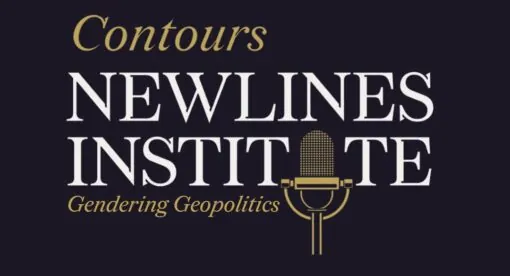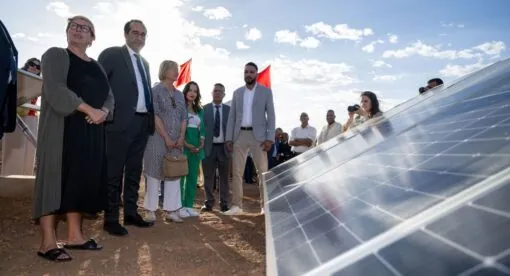The United States is experiencing significant turmoil right now, forced to confront three ongoing shocks: the public health crisis of the COVID-19 pandemic, the pandemic’s economic impact, and the fluid socio-political effects of the nationwide protests against systemic anti-Black racism. These shocks have clear geopolitical implications and are already manifesting in areas ranging from global public health to inspiring other movements for racial equity. But, also relevant to U.S. national security concerns, non-state extremist actors have inserted themselves into events associated with these shocks — namely the anti-lockdown and anti-racism protests — to exploit the socio-political discontent behind them and further their ideological agendas.
In the short term — particularly before, during, and immediately after the 2020 national elections — we expect an increased risk of further turmoil, including the possibility of further ideologically motivated violence. To mitigate this risk, political leaders need to exercise greater care with their political messaging and strengthen institutions central to the democratic rule of law by enacting important reforms.
The Far-Left and Far-Right Radicalization Loop
One important factor influencing far-right actors’ rhetoric and behavior, particularly surrounding the anti-racism protests, is how the perceived threat of far-left actors is exploited to recruit, radicalize, and mobilize individuals to advance their ideological objectives. Just as far-right and Islamist extremists use each other’s incendiary rhetoric and violence to validate their own narratives for recruitment purposes, far-left and far-right actors are engaged in reciprocal radicalization. This dynamic has significantly informed the rhetoric and behavior of far-right non-state actors.

During past protests, far-left actors, such as violent elements of black-bloc anarchists, Black nationalists, and those self-identifying as Antifa (short for “Anti-Fascists”), have engaged primarily in property destruction against symbols of capitalism (such as banks, stores, restaurants, and other targets of opportunity) as well as authority (specifically, law enforcement and government buildings). Antifa is not a terrorist organization as government officials have claimed; it is a decentralized political movement with both unlawful violent and lawful non-violent elements. Violent U.S. far-left extremists have previously used the cover of legitimate protest activity to lash out at the “capitalist system” by throwing projectiles at police, smashing windows of businesses, and setting fire to stores, government buildings, and police cars.
To the extent that far-left actors target people, with a handful of notable exceptions, in the past several years such activities predominantly manifested in street fights with far-right extremists across the country, especially when far-right rallies are held in politically liberal cities. According to David Neiwert, an investigative journalist and long-time analyst of the U.S. far right, the intent of these far-right rallies is to provoke public outrage and bait individuals into violence. While resulting in arrests and bodily injuries to many participants, these fights thus far have not led to any fatalities directly committed by far-left actors.
This cursory survey of prior violence notwithstanding, there are a handful of clear examples at the moment demonstrating far-left involvement in the violence and looting associated with the current anti-racism protests. For example, on June 5, a far-left anarchist was arrested in Pittsburgh for smashing windows of a police vehicle. Three alleged Antifa adherents were arrested for causing $20,000 in property damage and looting a retail store on May 31, during protests in Austin, Texas.
Multiple analyses of arrest records indicate there is little evidence, at least at this time, to substantiate claims made by officials, including U.S. Attorney General William Barr, that Antifa or other far-left actors are significantly involved in extant violence associated with the anti-racism protests. That said, there is also a significant limitation to the kind of conclusions that can be drawn from analyses of current arrest data. The data can only show who was caught allegedly committing a crime, raising the possibility that other alleged criminals involved have not yet been caught. Law enforcement authorities continue to investigate the scope of extremists’ unlawful activities surrounding these protests.
To get a better sense of the potential non-state far-left presence in and around nationwide anti-racism protests, we systematically tracked and analyzed open source information derived from media outlets and social media accounts. There are obvious limitations to what our open-source data can tell us, including an exhaustive accounting of the size and scope of any far-left presence at a given protest. We thus believe our data likely represents an undercounting of far-left actors at anti-racism protests. Nevertheless, our data represents a preliminary systematic attempt to document this phenomenon, rather than draw conclusions solely from anecdotal information. Between May 26 (the day after George Floyd’s killing) and June 20 (the day after the Juneteenth commemoration), we identified evidence consistent with far-left presence and activity at 42 unique events across 21 states and the District of Columbia.
While in some cases a far-left presence was identified with an alleged crime (such as social media videos of vandalism containing messages consistent with far-left beliefs), in other cases evidence of their activity was identified through lawful expression of their beliefs (such as a newspaper photograph of an individual holding a flag with an anarchist symbol). The most common far-left sub-ideology identified was anarchism (at 28 unique events), followed by extremist strands of Black nationalism, specifically the New Black Panther Party and sibling group New Black Panther Nation (seven unique events); we identified strong evidence of Antifa presence at eight unique events.
Far-left actors are also not known to have participated in the anti-lockdown protests in the United States, especially because their end of the ideological spectrum has typically voiced support for public health stay-at-home orders.
The Protests and Far-Right Activity
Media outlets have also reported a far-right extremist presence at both the anti-lockdown protests and the anti-racism protests. Far-right extremists are using these national issues to recruit, radicalize, and potentially mobilize hardcore adherents toward violence. Whereas far-left extremist violence primarily results in property damage, far-right extremist violence – particularly from white supremacists and anti-government extremists, two of the largest and most well-known segments of the U.S. far right – is largely characterized by violence against people perceived as the enemy.

White supremacists believe that “white” people are genetically, morally, and/or culturally superior to all other races. Their beliefs and activities are typically characterized by intense animosity and anxiety toward ethnic, racial, and/or religious minorities. Anti-government extremists are primarily mobilized by an intense fear and loathing of government actors — especially those representing the U.S. federal government — rather than ethnic/racial/religious hatred per se. That said, although representing two distinct segments of the broader U.S. far-right milieu, these groups significantly overlap with each other in terms of movement supporters, as well as similar-sounding narratives that justify and inspire their activities, including unlawful violence.
For many white supremacists, the intent is to bolster their ranks as well as exploit current crises — including the COVID-19 pandemic and the anti-racism protests — to instigate a “race war” between whites and non-whites. The desired outcome from such racial conflict, particularly for those who identify as “accelerationists,” would be the collapse of the U.S. government and society to create a white “ethno-state” upon its ruins. Some white supremacists who identify as “white separatists,” envision an ethno-state as a “white homeland” within a geographic segment of the United States (rather than its entirety) that would live alongside, but in complete segregation from, “homelands” for non-whites. Other white supremacists, who may not adhere to accelerationist ideas, may nevertheless seek to take violent action because they feel threatened and angered by the prospect of increased empowerment of minority groups, as represented by the anti-racism protests.
For example, on March 24, a white supremacist under FBI investigation for plotting to bomb a hospital in the Kansas City metropolitan region died as authorities attempted to serve an arrest warrant. He reportedly was inspired by the COVID-19 pandemic to plot a domestic terrorism attack. On June 7, a self-admitted Ku Klux Klan leader was charged in connection with a vehicle ramming attack on a crowd of Black Lives Matters protestors in Lakeside, Virginia.
In addition to white supremacists, anti-government extremists (sometimes also referred to as the “Patriot” movement) have been visibly present at armed anti-lockdown rallies in state capitols both in terms of their numbers and in expressions of their hardline ideology, which distinguishes them from mainstream conservatives and gun rights supporters. These extremist actors have been loudly calling for others to defy government self-quarantine directives (by force, if necessary). In the context of anti-racism protests, their activities ranged from purportedly protecting some local businesses against vandalism and looting, to participating in armed counter-protests and ad hoc community patrols that were formed to defend against (falsely) rumored Antifa plots to instigate riots in suburban and rural communities.
Like white supremacists, anti-government extremists often mention a similar-sounding narrative of an upcoming “civil war,” (also expressed through associated terms such as “the Boogaloo,” “the Loo,” “big Igloo,” “big luau,” “the end of the world as we know it” or TEOTWAWKI, and “When the S**t Hits the Fan” or WTSHTF). While less overtly racist than a “race war,” anti-government extremists’ notion of a “civil war” nevertheless contains very strong racial undertones.
The idea of a “civil war,” along with other far-right anti-government conspiracy theories, appears to have inspired recent attempts of ideologically-motivated violence. For example, on March 31, the FBI charged a railroad engineer with deliberately derailing a freight train near the Navy hospital ship Mercy docked in San Pedro, California, due to his belief in a conspiracy theory popular with anti-government extremists about COVID-19. On May 1, the FBI seized four pipe bombs at the Loveland, Colorado, home of an anti-government militia extremist involved in anti-lockdown protests. On May 30, authorities arrested three armed “Boogaloo” adherents for plotting to provoke violence at an anti-racism protest in Las Vegas, Nevada. Finally, on May 29, “Boogaloo” supporter and Air Force soldier Steven Carillo and accomplice Robert Justus shot and killed a security officer at a federal building in Santa Cruz, California. About a week later, on June 6, Carillo ambushed two local police officers, fatally shooting one, before being apprehended. In addition to the firearm used in the homicide, officers also found Carillo to be in unlawful possession of an explosive device.

Other concerns about far-right extremist exploitation of the unrest surrounding the anti-racism protests go beyond actual and attempted acts of ideologically motivated violence. Significant attention has been dedicated to examples of white supremacist and anti-government extremists urging their fellow supporters via the Internet to join the protests and instigate further unrest.
Just as we did for non-state far-left actors, we also monitored and analyzed media outlets, social media accounts and reports from anti-hate watchdog groups to systematically collect data on non-state far-right mobilization in reaction to nationwide anti-racism protests. For the same reasons regarding our documentation of far-left activity, we believe our data likely also represents an undercounting of far-right actors at anti-racism protests. We found far-right actors were present in or around at least 134 unique events across 36 states and the District of Columbia. Of the various far-right sub-groups we identified, the most frequently encountered were anti-government extremists, who showed up to 75 unique events, followed by white nationalists/supremacists (23 unique events). General far-right actors were present at 21 unique events, while those categorized as “far-right (other)” were present at 15 unique events, all of which were armed vigilante groups responding to false rumors of planned Antifa riots. (“General far-right” actors are defined as those who express support for more than one far-right sub-ideology [e.g. anti-abortion and anti-immigration extremism], belong to a group [e.g. Proud Boys or Hiwaymen] that expresses support for more than one far-right sub-ideology, or attended an event where multiple actors across multiple far-right sub-ideologies [e.g. Three Percenters and white supremacists] are present at the same time.)

Despite the significant media attention given to concerns about white supremacist “accelerationists” seeking to infiltrate, destabilize, and discredit otherwise peaceful protests, we identified one case, a single individual, consistent with this description. Various anti-racist and anti-fascist activists, using information taken from the accelerationist’s social media posts, identified him while he was at a protest in Dallas, Texas, and shortly thereafter revealed his personal identity and other information online.
Apart from being physically present at protests, white supremacists have also attempted to influence dynamics on the ground by promoting disinformation. At the height of the protests, at least one white supremacist group created a fake “Antifa” Twitter account to make calls for violence at the protests. This same Twitter account appears to be at least partly responsible for spreading false rumors of groups of Antifa and Black Americans coming to loot “white neighborhoods” across the United States. Responses to the rumors have ranged from public officials debunking or repeating the falsehoods to anti-government militia groups and local residents setting up armed vigilante patrols in panicked communities. (Although a chorus of bipartisan voices has expressed concern about possible foreign disinformation efforts, experts have found no evidence to substantiate those concerns at this time.) Authorities continue to investigate who else may also be responsible for these false claims.
Finally, multiple news outlets have reported law enforcement deputies and officers bearing far-right symbology on their uniforms and vehicles while policing the civil unrest, suggesting a far-right infiltration of policing agencies. Our data on far-right mobilization in reaction to the anti-racism protests found at least 10 cases of law enforcement officials showing support for extremists, ranging from law enforcement officers displaying symbols associated with, and openly claiming membership in, far-right groups/movements to engaging photo-ops and coordination with far-right actors at protests. Nine of these cases involved anti-government extremist actors; the 10th involved a police officer providing an information tip-off to armed anti-Antifa vigilantes in Salem, Oregon.
While attention to white supremacist infiltration of law enforcement entities has increased, far-right anti-government actors such as supporters of The Three Percenter movement, the Oath Keepers, and the Constitutional Sheriffs and Peace Officers Association (CSPOA) are also known to have current and former police officers within their ranks. Three Percenter supporters have been known to target, among others, American Muslim communities with armed rallies, calls for violence/threats, and actual terrorist plotting. (In a forthcoming Newlines Institute Policy Brief, we will further explore the beliefs and activities of Three Percenters and the threat they pose to American Muslims.) The Oath Keepers and CSPOA are organizations dedicated specifically to recruiting military, law enforcement, and other first responders into its membership. Oath Keepers have previously claimed tens of thousands of members and although watchdog groups like the Anti-Defamation League believe these numbers are probably inflated, “they do have at least a couple thousand, which makes them one of the largest anti‐government extremist groups in the U.S., larger than any militia group.” Meanwhile, a report by Political Research Associates, another anti-hate watchdog, found that as of its publication in June 2019, there were 267 elected county sheriffs nationwide currently sitting in office who had some involvement with CSPOA. This represents 8.6% of a total of 3,081 elected sheriffs nationwide.
Forecast
In the short term, particularly around the 2020 U.S. national elections, we expect there will be an increased risk of further turmoil. Many of the macro-level factors associated with the current upheaval — deepening socio-political polarization, the public health and economic crises linked to the COVID-19 pandemic, and the multifaceted components fueling the anti-racism protests — have not abated. In some cases, such as the public health crisis of COVID-19, they have intensified.
In turn, among other things, this has largely enabled and energized extremist networks at the meso level on the far left and far right to mobilize and engage in a variety of activities, including showing up to recent protests, recruitment, and radicalization of sympathizers and would-be supporters. By extension this creates more permissible conditions for micro-level entry into violence, whether by small cells or lone actors.
The increased risk of social turmoil, and political violence in particular, is further enabled by two other factors. First are heated and sloppy statements from public officials that exacerbate socio-political polarization and make consensus-based national policymaking more difficult.
As of this writing, President Donald Trump’s job approval has dropped 20 points during the past two months, which analysts attribute to the public’s negative perception of his handling of the COVID-19 public health and economic crises as well as the anti-racism protests. During this time, the president has switched from focusing on the economy to doubling down on firebrand law-and-order rhetoric as part of his re-election strategy. (The president’s surge of federal law enforcement presence in Portland, as well as the separate, but closely timed launch of Operation LeGend in Kansas City, Missouri, needs to be seen in this context.) While there is evidence to suggest this tactic helped mobilize large parts of then-candidate Trump’s political base in the 2016 election, whether intended to or not, it was also perceived as racially-coded dog-whistle messaging, which far-right extremists have interpreted as a tacit affirmation of their views. Analysts have observed a similar double-edged impact to the president’s hyper-partisan rhetoric during the anti-lockdown and anti-racism protests.
Yet the president and his side of the political spectrum are hardly the only ones using blustery words amid national social upheaval. On June 25, the U.S. House of Representatives held a floor debate on proposed police reform legislation, which was catalyzed by the widespread moral outrage expressed at the police killing of George Floyd. During that debate Rep. Jerrold Nadler (D-NY), chairman of the House Judiciary Committee, had called the Antifa movement “an imaginary thing” while heatedly criticizing bill amendments from Republicans. A week earlier, Politico reported that during a House Judiciary Committee hearing, Rep. Hank Johnson (D-GA) made a similar remark saying that “antifa [sic] was a ‘figment of Donald Trump’s imagination.’” Such ham-fisted and partisan statements fly in the face of overwhelming evidence documenting the Antifa movement’s decades-long existence.
The second factor enabling the increased risk of political violence is the uneven quality of intelligence consumed by local and state governmental actors. As noted earlier, some local government officials, including some law enforcement leaders, inadvertently spread false rumors about Antifa plots to commit acts of violence, including rioting as well as bombings, in cities and towns across the United States. In response, many communities formed their own heavily armed vigilante groups in response. Many of these leaders claimed they had received reliable information at the time about imminent criminal activity. Much of this unreliable information, according to media reports, appears to have come from various state- and regionally-operated fusion centers, in places such as Washington State, Minnesota, and Maine. Almost since the time they were established in 2004, fusion centers have been an object of controversy, with some supporters describing them as very helpful but critics describing them as wasteful, ineffective and consistently prone to violating Americans’ privacy, civil rights, and civil liberties. The concern about false information circulating among law enforcement becomes more acute when thinking about extremist infiltration of policing entities and whether or not these actors may be contributing in some ways to the pollution of intelligence streams.
With Election Day less than four months away, it is not unreasonable to assume elected officials will be tempted to engage in further hyperbolic rhetoric. Election Day may also serve as a motivator for various malignant actors to ramp up any planned disinformation campaigns. The fast and easy spread of the Antifa rumors and the chaos they caused could also inspire disinformation campaigns from domestic and foreign actors wishing to disrupt the electoral process.
Recommendations
We recommend at least four steps to ameliorate future unrest.
First, elected officials need to take greater care with their messaging. Fiery rhetoric may make for effective base politics, but it is terrible policy, assuming that “good” policy is defined as helping to mitigate extremist mobilization amid wider social upheaval.
Second, structural policing reforms are needed. In addition to enacting high-profile reforms associated with the call for justice made by those participating in the anti-racism protests, we believe reforms should extend to fixing the shortcomings of fusion centers. This should include improving the quality of fusion center intelligence products, as well as ensuring compliance with privacy, civil rights, and civil liberties requirements set forth by the federal government.
Third, law enforcement entities need to remove extremists from their ranks. Some departments have claimed that issues of free speech prevent them from disciplining or removing officers expressing extremist ideologies, including while off duty. However legal precedent from a 2006 U.S. Court of Appeals ruling found that it was constitutionally permissible for first responder entities to fire employees for something such as racist speech or behavior, even if lawfully expressed and while off duty. However, firing problematic officers may not be viable in cases where law enforcement entities are run by anti-government extremist “Constitutional Sheriffs” who often operate with no direct oversight. In those situations, local and state governments are urged to enact transparency and accountability reforms that enable them to perform better oversight. Entities that share intelligence with departments run by anti-government extremist sheriffs should conduct insider threat assessments, and where appropriate, limit their access to sensitive information if this has not already been done.
Finally, local, state, and federal law enforcement authorities need to give greater priority to investigating and preventing acts of far-right ideologically-motivated violence. Data and reporting from the Center for Investigative Reporting on ideologically motivated violence in the United States shows that since 2008 far-right actors have killed more individuals than Islamist and far-left actors combined. Yet despite the growing lethality of far-right attacks, including the November 2017 Las Vegas, February 2018 Parkland, Florida, and 2019 El Paso incidents, not until February 2020 did the Federal Bureau of Investigation (FBI) officially elevate “racially motivated violent extremism” — which includes both white supremacists and extremist strands of Black nationalism — to the same threat level as actors like the Islamic State. Given the extreme lethality of the 2017 Las Vegas attack (58 dead, 851 wounded), which we assess to be motivated in significant part by anti-government extremist ideology, as well as the mobilization of actors like the “Boogaloo” movement, we believe entities like the FBI and others should similarly elevate anti-government violent extremists to the highest threat level possible. We also believe, given the recent controversies over the Bureau’s assessment of extremist Black nationalist violence, it should parse out extremist Black nationalist violence from extremist white supremacist violence, recategorize it appropriately, and assess its extant threat to public safety accordingly.
Alejandro J. Beutel is a nonresident fellow with the Newlines Institute who studies non-violent and violent far-right extremist and Islamist movements. He is a former Senior Research Analyst at the Southern Poverty Law Center and a current Research Affiliate with the National Consortium for Study of Terrorism and Responses to Terrorism (START).
Daryl Johnson is one of the foremost experts on domestic extremist groups in the US and a nonresident fellow with the Newlines Institute. Beginning his career as a civilian in the US Army, Johnson has held a number of government positions, most recently as senior analyst at the Department of Homeland Security. He is also regularly cited, featured, or quoted in media covering domestic extremist groups in the US, including the New York Times, Washington Post, Wall Street Journal, Newsweek, National Public Radio, MSNBC, CNN, and NBC Nightly News, among many others. He is the author of “Hateland: A Long, Hard Look at America’s Extremist Heart” (Prometheus Books, 2019) and “Right-Wing Resurgence: How a Domestic Terrorism Threat Is Being Ignored” (Rowman & Littlefield, 2012).
The views expressed in this article are those of the author and not an official policy or position of the Newlines Institute.


